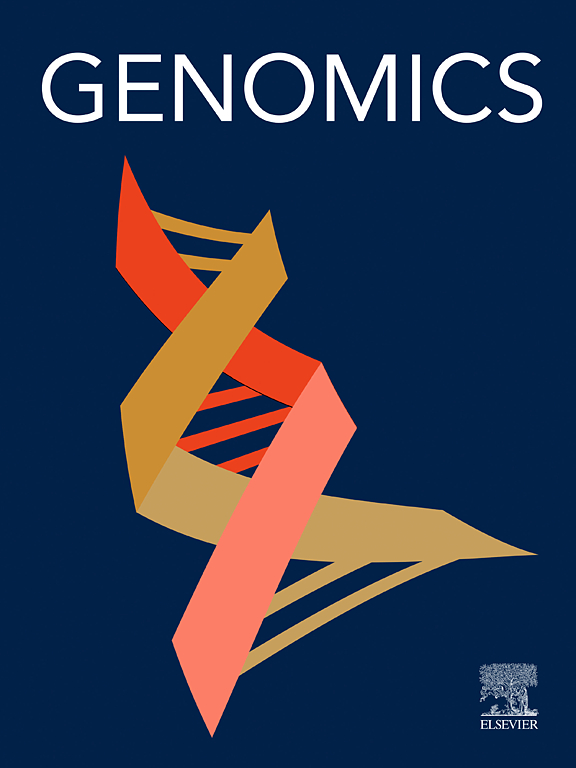Comparative genomics of Bacillus anthracis A and B-clades reveals genetic variation in genes responsible for spore germination
IF 3
2区 生物学
Q2 BIOTECHNOLOGY & APPLIED MICROBIOLOGY
引用次数: 0
Abstract
Bacillus anthracis, the causative agent of anthrax, is composed of three genetic clades (A, B, and C). Clade-A is the most common and distributed worldwide, B-clade has a narrow geographic distribution, and C-clade is rare. South Africa's Kruger National Park (KNP) has high diversity of B. anthracis, with strains from A and B clades described from its northernmost region, Pafuri. We employed whole genome sequencing to investigate the genomic diversity of B. anthracis strains isolated from animal carcasses (n = 34) during the 2012–2015 outbreaks. Whole-genome single-nucleotide polymorphism (wgSNP) analysis assigned the 2012–2015 B. anthracis genomes to the A-clade branch, distributed across the branch's two minor sub-clades A.Br.005/006. Additionally, pan-genomic analysis distinguished the A- and B-clade genomes, identifying unique accessory genes. Notable genetic differences include the biosynthetic spore cell wall genes; long-chain fatty acid CoA ligases (FaD13), Bacillus collagen-like protein of anthracis (BclA) involved in the exosporium germination, as well as a truncated murein DD-endopeptidase (mepH) found in the pXO2 plasmid of the B-clade strains. The tryptophan synthase subunit alpha gene (trpA), which results in a pseudogene in B-clade genomes separates the A- and B-clade genomes. These differences in biosynthetic cell wall genes suggest variation in adaptability or cell growth of the B-clade strains in the environment, further influenced by the truncation of the trpA gene involved in spore germination. The A.Br.005/006-clade strains in KNP exhibit higher genetic diversity, which may enhance their resilience to environmental stressors. In contrast, the KNP B-clade (B.Br.001/002) strains show limited genetic variation, potentially reducing their adaptability. This pattern is evident through whole-genome SNP analysis and pan-genomics investigating the evolution of B. anthracis.
炭疽芽孢杆菌A枝和b枝的比较基因组学揭示了负责孢子萌发的基因的遗传变异
炭疽芽孢杆菌是炭疽的病原体,由三个遗传支系(A、B和C)组成。a枝在世界范围内分布最普遍,b枝地理分布较窄,c枝较为罕见。南非的克鲁格国家公园(KNP)拥有高度多样化的炭疽杆菌,在其最北部的帕夫里地区发现了A和B分支的菌株。我们采用全基因组测序方法调查2012-2015年疫情期间从动物尸体(n = 34)分离的炭疽芽孢杆菌菌株的基因组多样性。全基因组单核苷酸多态性(wgSNP)分析将2012-2015年炭疽芽孢杆菌基因组定位为a枝分支,分布在该分支的两个小亚分支A.Br.005/006上。此外,泛基因组分析区分了A枝和b枝基因组,确定了独特的附属基因。显著的遗传差异包括:生物合成孢子细胞壁基因;长链脂肪酸辅酶a连接酶(FaD13)、炭疽芽孢杆菌胶原样蛋白(BclA)参与孢子萌发,以及在b支菌株pXO2质粒中发现的截断的鼠蛋白dd -内肽酶(mepH)。色氨酸合成酶亚基α基因(trpA)在b进化支基因组中产生假基因,将a进化支和b进化支基因组分开。这些生物合成细胞壁基因的差异表明b枝菌株在环境中的适应性或细胞生长存在差异,进一步受到参与孢子萌发的trpA基因截断的影响。A.Br。KNP的005/006分支菌株表现出较高的遗传多样性,这可能增强了它们对环境胁迫的适应能力。相比之下,KNP b支(B.Br.001/002)菌株表现出有限的遗传变异,可能降低了它们的适应性。这种模式通过全基因组SNP分析和泛基因组学研究炭疽杆菌的进化是明显的。
本文章由计算机程序翻译,如有差异,请以英文原文为准。
求助全文
约1分钟内获得全文
求助全文
来源期刊

Genomics
生物-生物工程与应用微生物
CiteScore
9.60
自引率
2.30%
发文量
260
审稿时长
60 days
期刊介绍:
Genomics is a forum for describing the development of genome-scale technologies and their application to all areas of biological investigation.
As a journal that has evolved with the field that carries its name, Genomics focuses on the development and application of cutting-edge methods, addressing fundamental questions with potential interest to a wide audience. Our aim is to publish the highest quality research and to provide authors with rapid, fair and accurate review and publication of manuscripts falling within our scope.
 求助内容:
求助内容: 应助结果提醒方式:
应助结果提醒方式:


